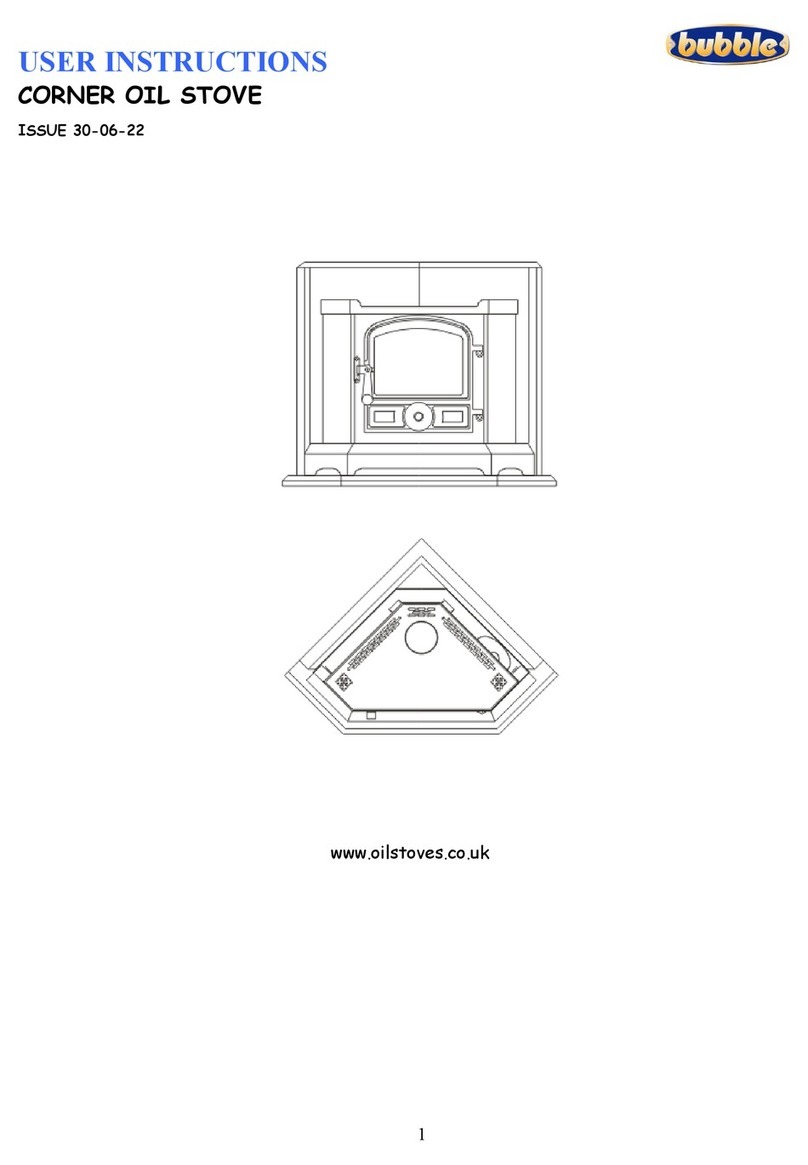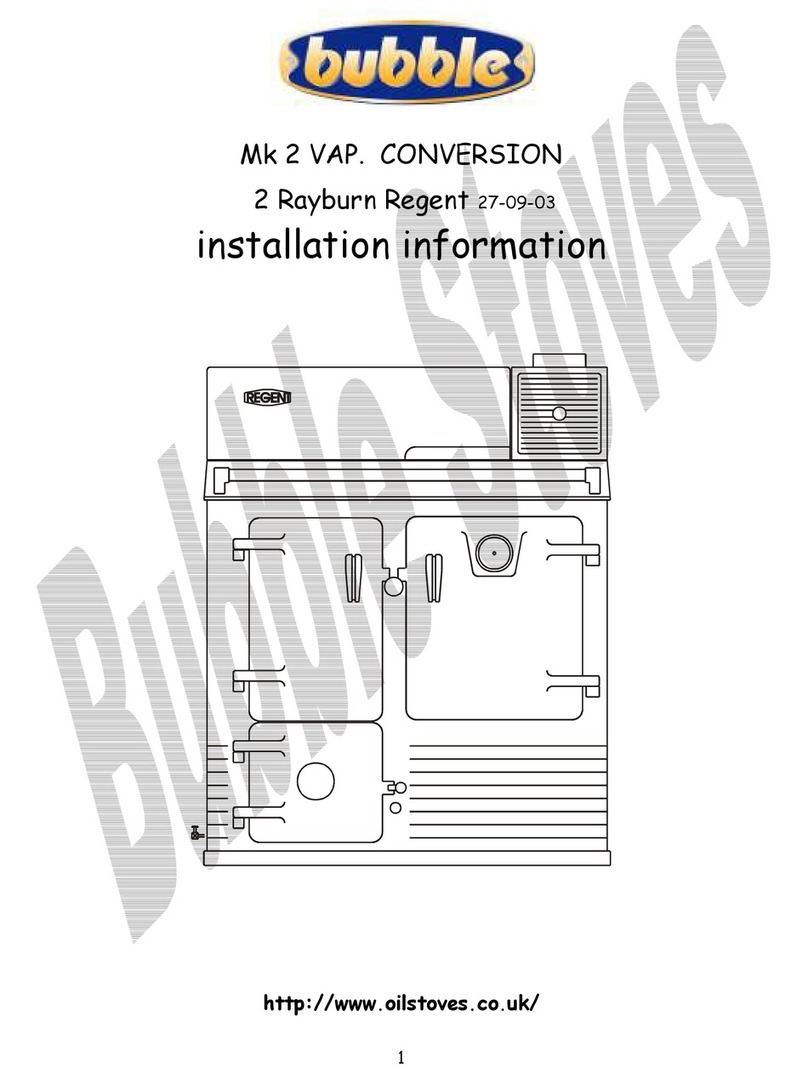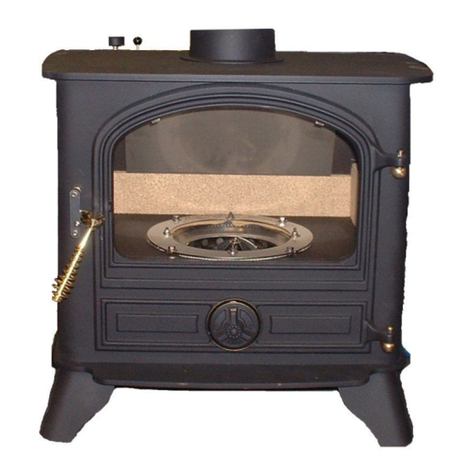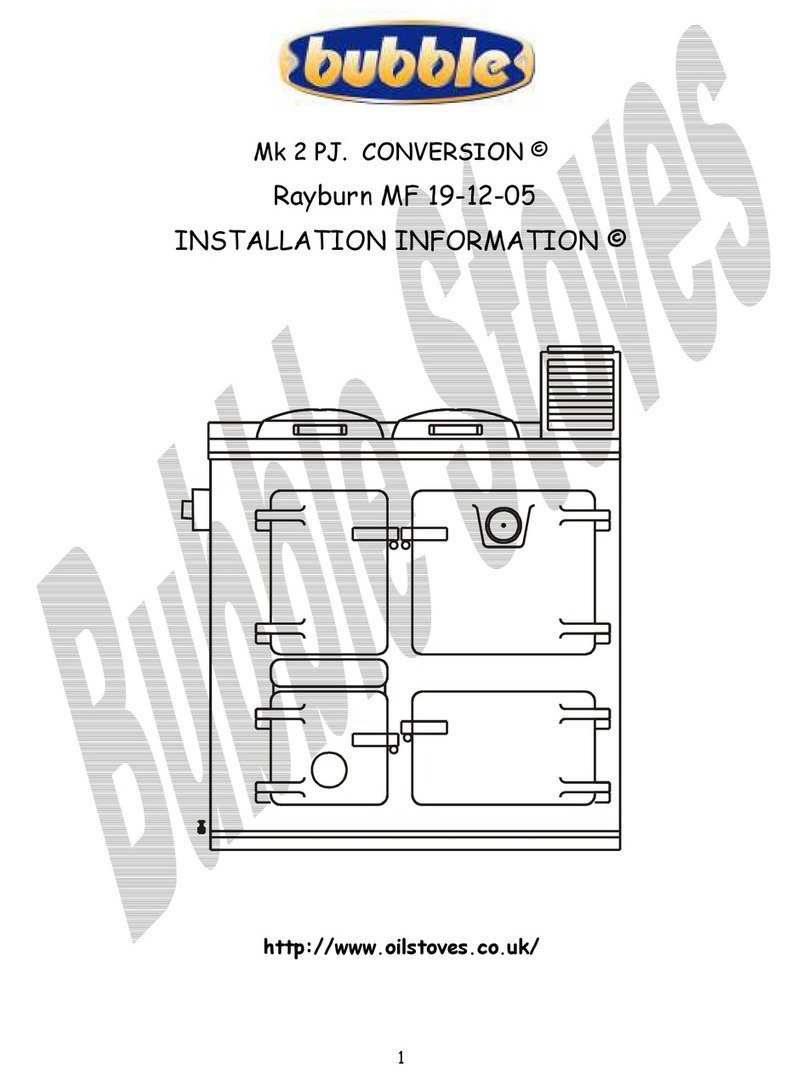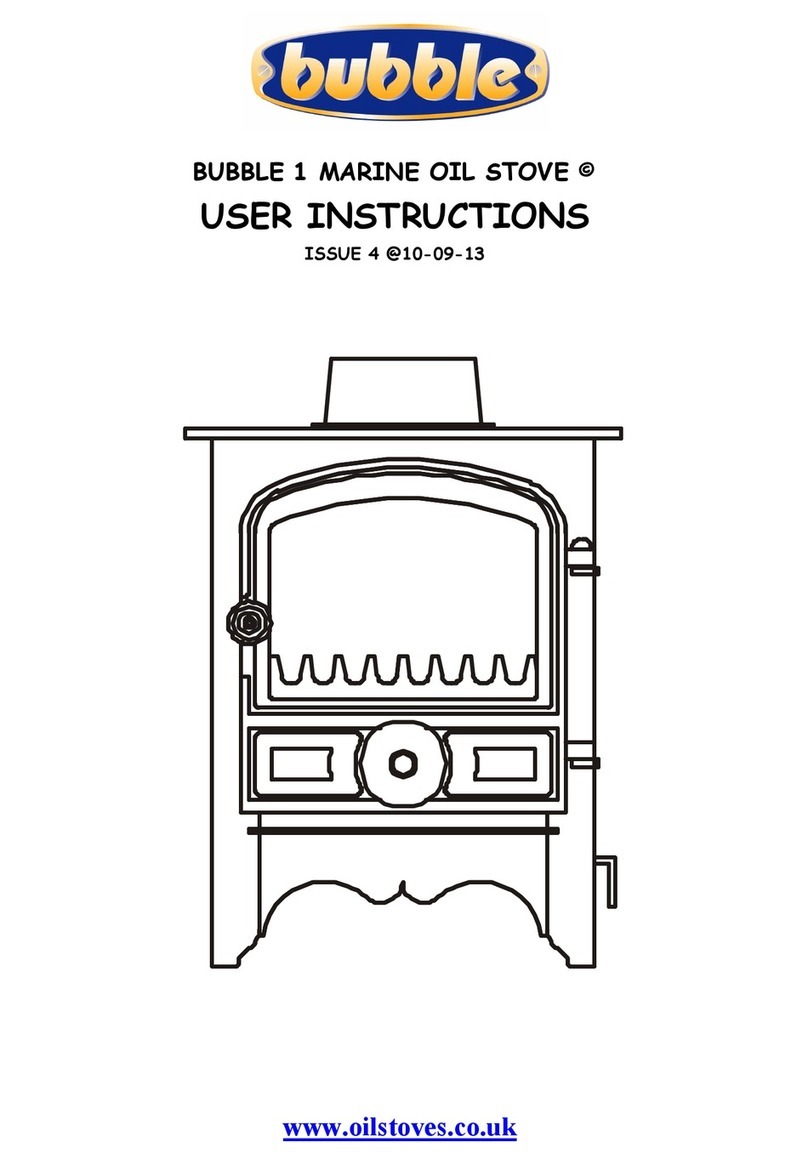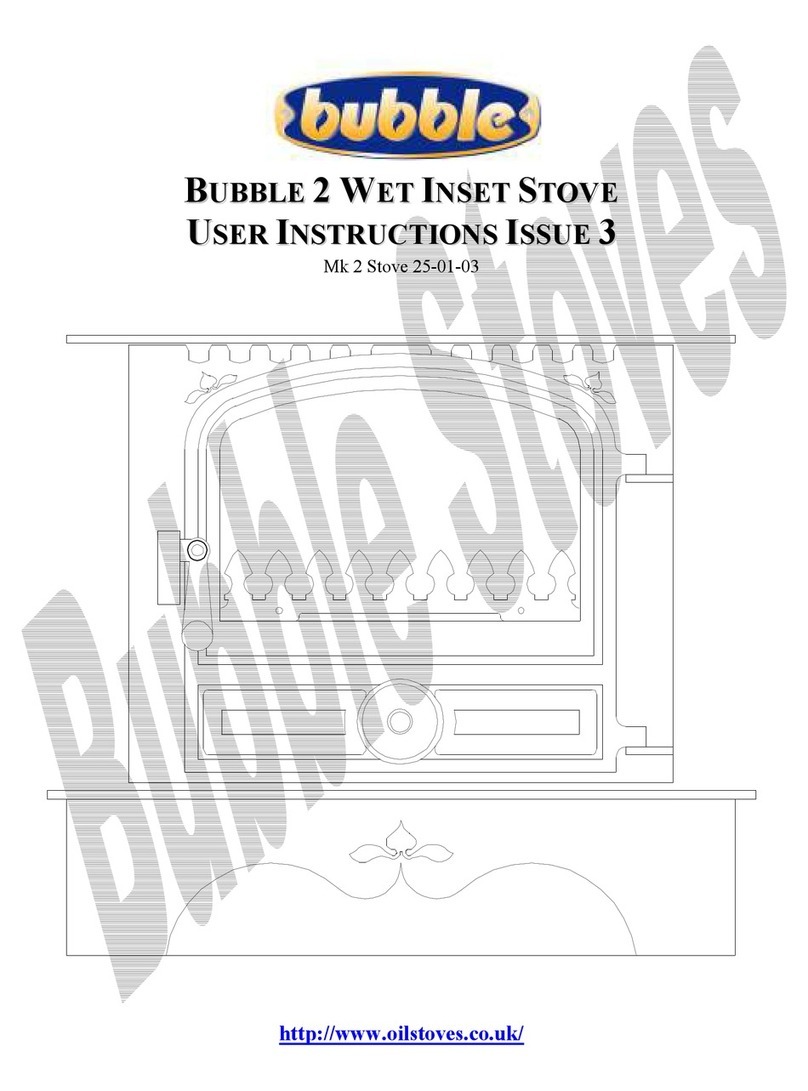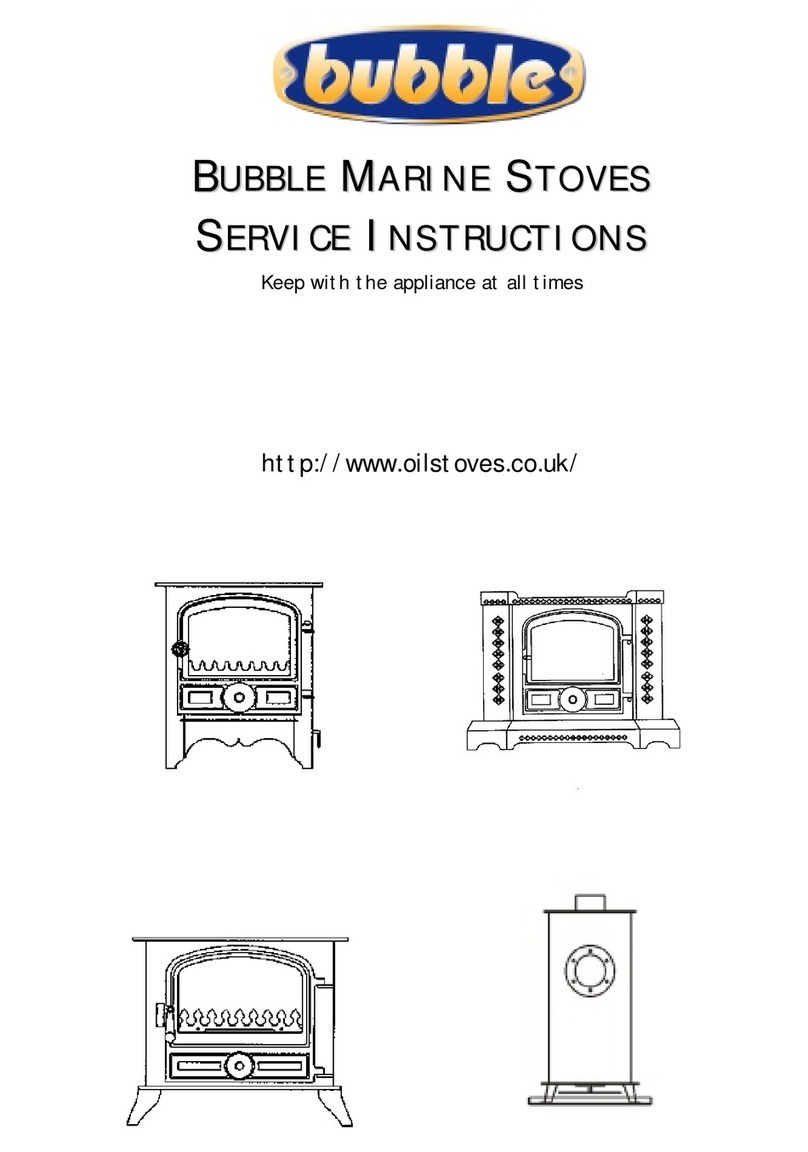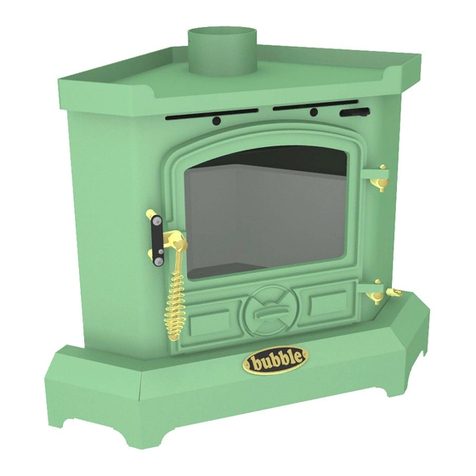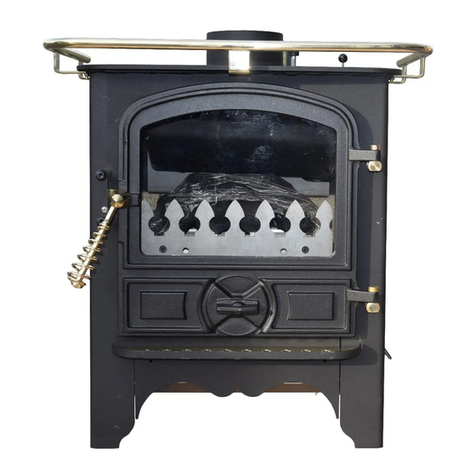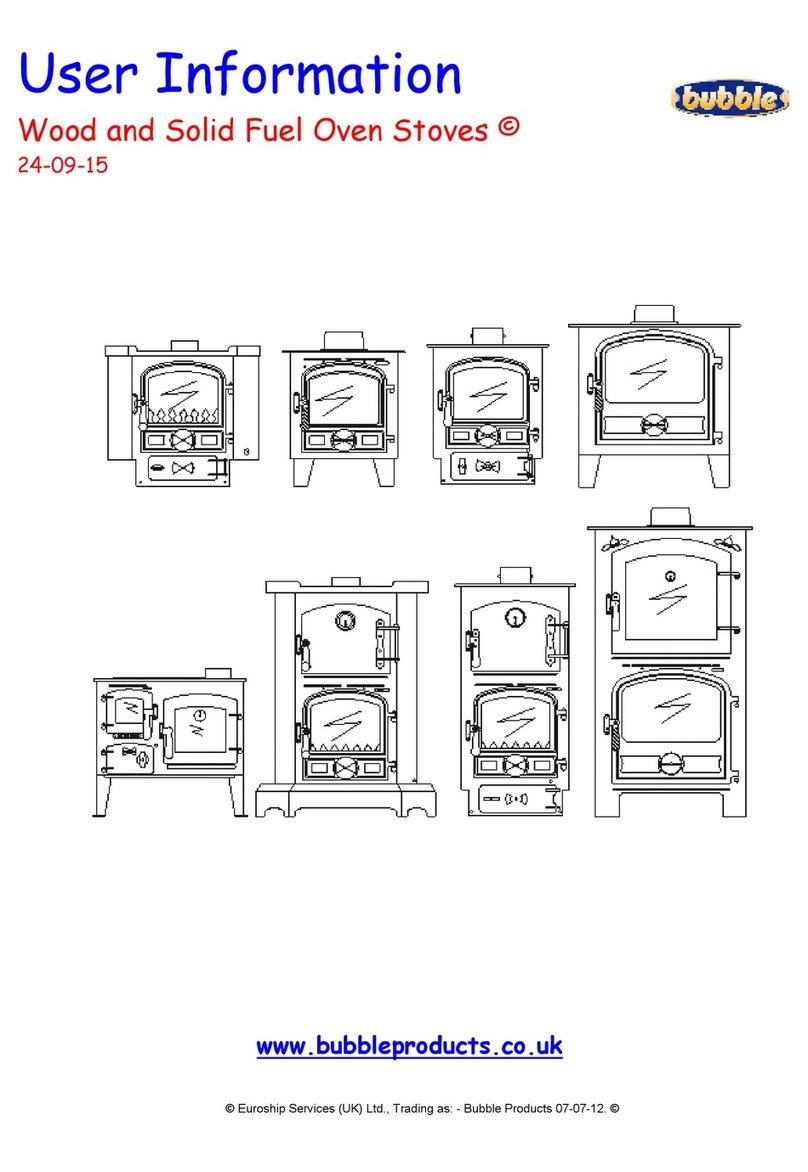The diameter of the oil line is dependant upon the
length of run. See 3-2 on waxing and make sure that
you have suitably sized compression fittings available.
At this point it is necessary to fit a 60 DEG C, remote
sensing fire valve, designed to shut off the oil supply,
should a fire occur near to the stove.
If the bubble stove is fitted up to the first bulkhead
it will be necessary to fit the isolation valve outside
the cabin or saloon of the boat.
WATER CONTAMINATION
Because of the high risk of fuel contamination with
water, we strongly recommend the fitting of a high
volume water trap, in the oil supply line.
REMOTE SENSING FIREVALVE
The fire valve has a capillary tube on the end of which
is a temperature sensitive phial, run the capillary tube
with the oil line up to the stove and carefully fit the
sensing phial 15mm pipe clips in front of the drip tray
on the fireplace hearth, directly in front of the
combustion air restrictor.
Before it is fitted try the fender on the stove to
make sure that the fender does not fowl the sensing
phial.
The sensing phial may be visible through the bottom of
the fender, to mask it, paint it with matt black paint
available from our sales desk.
When fitting the fire valve make sure that where the
capillary and oil line go through the bulkhead in
separate sleeved tubes, so that the capillary can be
withdrawn separately should it ever need replacing.
For fitting of long oil feed lines which pass through
bulkheads and various other parts of the boat it may
well be necessary to fit more than one fire valve,
especially where the oil line passes through an area
where a fire could occur i.e. kitchen area etc.
ISOLATION VALVES.
Two isolation valves are required, one fitted directly
into or close to the oil control valve to allow you or the
service man to turn the oil off should the need arise,
and one fitted directly into the oil tank before the
fuel filter.
Always turn off the oil isolation valve serving the
appliance before leaving the vessel unattended.
SLEEVING.
Where the oil line goes through the boat
superstructure a suitable bulkhead fitting must be
used.
OVERBOIL OR OVERHEAT PROTECTION OF THE
APPLIANCE.
Where Toby aquastats have not been fitted to the oil
control valve, an additional 90 DEG C, remote sensing
fire valve fitted either into, or close to the oil control
valve may be fitted.
The sensor from this valve has to be attached to the
water jacket or the hot outlet pipe from the boiler.
The valve is calibrated to shut the oil supply down
should the water temperature exceed 90 Deg C.
There is a re set button which needs to be pressed in
to re set the valve after it has tripped off.
5
5.
.F
FI
IR
RE
EP
PL
LA
AC
CE
E.
.
Always fit the stove on a suitable drip tray.
The possibility of oil drops leaking from the stove
must be considered, a suitable oil drip tray must be
fitted and designed in such a way, as it will contain any
oil leaks or drips.
Normally the tray will cover the footprint of the
stove, the oil valve and isolation device.
It will be oil tight and have a vertical upstand of at
least 30mm. This should give a minimum containment
volume of 2 litres.
It will be securely fastened down to the vessel and
the appliance must be securely fastened down to the
oil drip tray.
Make sure that drip trays are tested to ensure that
they do not leak when filled with oil.
Use materials, which are easy to keep clean and
fireproof such as tiles, asbestolux or vermiculite
boarding.
The hearth must be-:
FLAT - SECURE - FIREPROOF AND LEVEL IN BOTH
DIRECTIONS.
The vertical walls of the fireplace must be made from
fireproof materials.
Use fireproof, rockwool infill behind the fireplace
panels to protect any combustible insulation materials
such as spray foam.
